In the realm of luxury textiles, Pashmina stands as a paragon of exquisite quality, celebrated for its unparalleled softness and warmth. Renowned worldwide, Pashmina has garnered a reputation as a symbol of opulence and refined taste. However, as we delve into the realm of this luxurious fabric, a common query arises: "Does Pashmina smell?"
To demystify this question, it's essential to understand that Pashmina is not merely a fabric; it's a specific type of wool sourced from the soft underbelly of Himalayan goats, particularly the Changthangi breed. These goats, native to the high-altitude regions, endure harsh climates, resulting in an exceptionally fine and insulating wool. The unique properties of Pashmina make it a coveted material for crafting shawls and scarves. These products are cherished for their lightweight warmth and a sumptuous feel against the skin.
As we embark on this olfactory exploration, it's crucial to acknowledge that the distinct aroma of Pashmina is not a characteristic of its natural state. Instead, any perceived scent could be attributed to various factors such as storage conditions, processing methods, or environmental influences. In this blog, we'll unravel the mystery surrounding the scent of Pashmina, exploring the intricacies of its production, care, and the factors that may contribute to any perceptible fragrance. Let's embark on a journey through the world of Pashmina, uncovering the secrets behind its luxurious allure.
The Origin of Pashmina
Pashmina, a textile synonymous with luxury and refinement, traces its origins to the majestic landscapes of the Himalayan region, particularly the pristine valleys of Kashmir. Nestled amidst snow-capped peaks and serene landscapes, this geographical setting plays a pivotal role in the creation of the exquisite Cashmere wool.
At the heart of Pashmina's allure is its association with specific breeds of goats, notably the Changthangi breed native to the Himalayas. These goats navigate the challenging terrains and extreme altitudes, developing a soft, downy undercoat to shield them from the harsh cold. It is from this underbelly wool that Pashmina is meticulously harvested, making it a testament to the resilience of these remarkable Himalayan goats.
What makes Pashmina special?
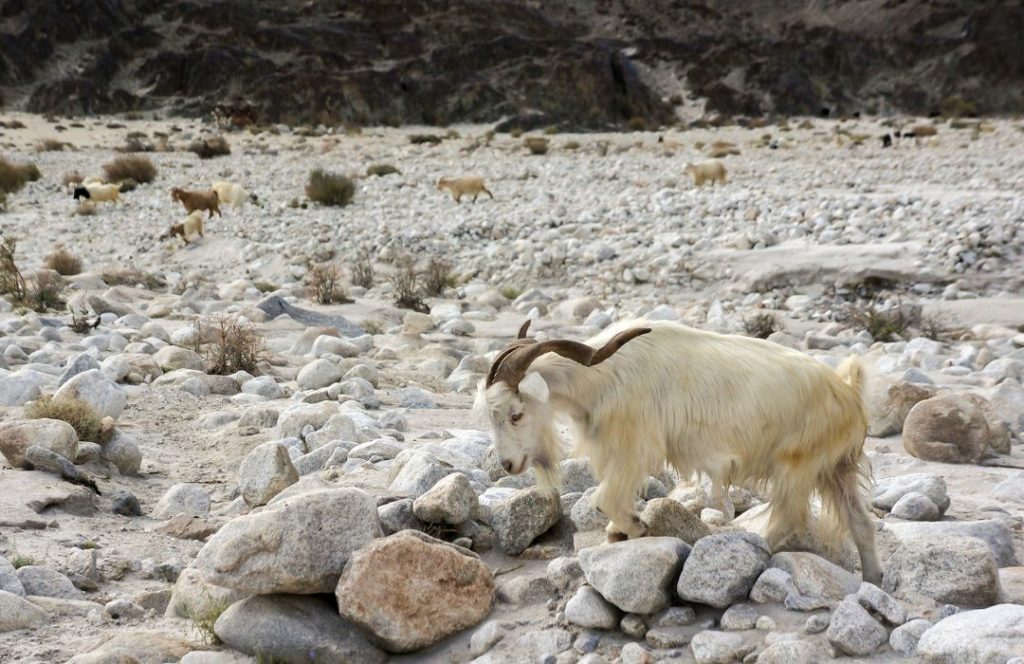
What distinguishes Pashmina is not just its geographical origin but also the extraordinary qualities inherent in its wool. The fibers are renowned for their exceptional fineness and unparalleled softness, creating a fabric that feels like a gentle caress against the skin. Pashmina, therefore, transcends the realm of mere art; it embodies a tactile luxury that is both rare and cherished.
The traditional process of collecting Cashmere fibers is a meticulous art, passed down through generations. Each spring, as the harsh winter wanes, the Changthangi goats naturally shed their winter coats. Skilled herders carefully collect this precious fleece, ensuring minimal disruption to the goats. The collected fibers undergo a series of labour-intensive processes, including cleaning, carding, spinning, and weaving, before they transform into the exquisite Pashmina shawls and scarves that captivate the world.
In this exploration of Pashmina's origin, we begin to unravel the threads of its rich narrative, woven into the very fabric of Kashmir's cultural tapestry. The geographical and cultural roots of Pashmina contribute not only to its exceptional quality but also to the mystique that surrounds this prized textile. As we continue our olfactory journey through the world of Pashmina, understanding its origin becomes a crucial piece of the aromatic puzzle. We will also understand that the question "Does Pashmina smell" is asked by those who do not have enough knowledge about the processing.
The Production Process
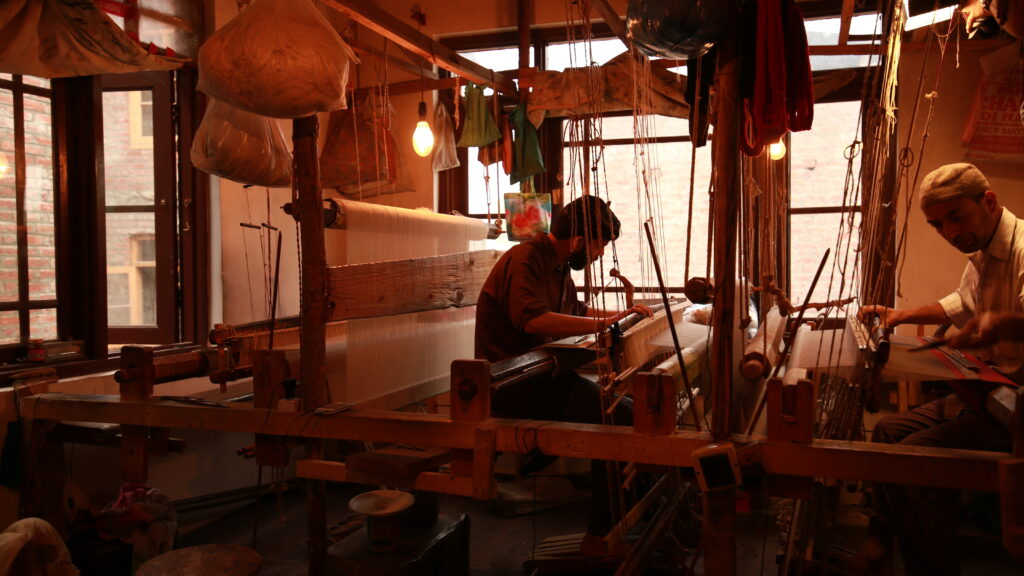
The journey from raw Cashmere fibers to exquisite finished products is a testament to the craftsmanship embedded in the Pashmina tradition. This intricate process transforms the collected fleece into luxurious shawls and scarves that embody the essence of Himalayan elegance.
Cleaning the Precious Fibers
The first step involves cleaning the raw Cashmere fibers to remove any impurities acquired during the collection process. Skilled artisans delicately wash and comb the wool, ensuring that only the purest strands remain. This meticulous cleaning sets the foundation for the exceptional quality of Pashmina.
Spinning the Fine Yarn
Once cleaned, the fibers are spun into a delicate yarn. This process requires a keen eye and a deft touch, as the artisans aim to preserve the fineness and softness of the Cashmere. Hand-spinning ensures that each thread retains its natural characteristics, contributing to the unique texture that defines Pashmina products.
Weaving the Fabric
The spun yarn is then transformed into the final fabric through traditional hand-weaving techniques. Expert weavers, often working on handlooms, bring the Pashmina to life, one careful thread at a time. The handcrafted nature of this process ensures that each piece carries the imprints of the artisan's skill, making every Pashmina product a work of art.
Embracing Handcraftsmanship
A distinguishing feature of Pashmina production is the emphasis on handcraftsmanship at every stage. The artisanal touch infuses the final products with a sense of authenticity and uniqueness. Unlike mass-produced textiles, Pashmina items are a testament to the time-honoured skills passed down through generations. This commitment to handcraftsmanship not only preserves the traditional artistry but also contributes to the exceptional quality and longevity of Pashmina.
As we delve into the production process, it becomes evident that the journey from raw Cashmere fibers to the finished products is an intricate dance between tradition and skill. The hands that carefully clean, spin, and weave are the guardians of a craft that transcends generations. Each item, infused with the essence of this labour-intensive process, becomes a symbol of the artistry and dedication that defines the world of Pashmina.
Care and Maintenance
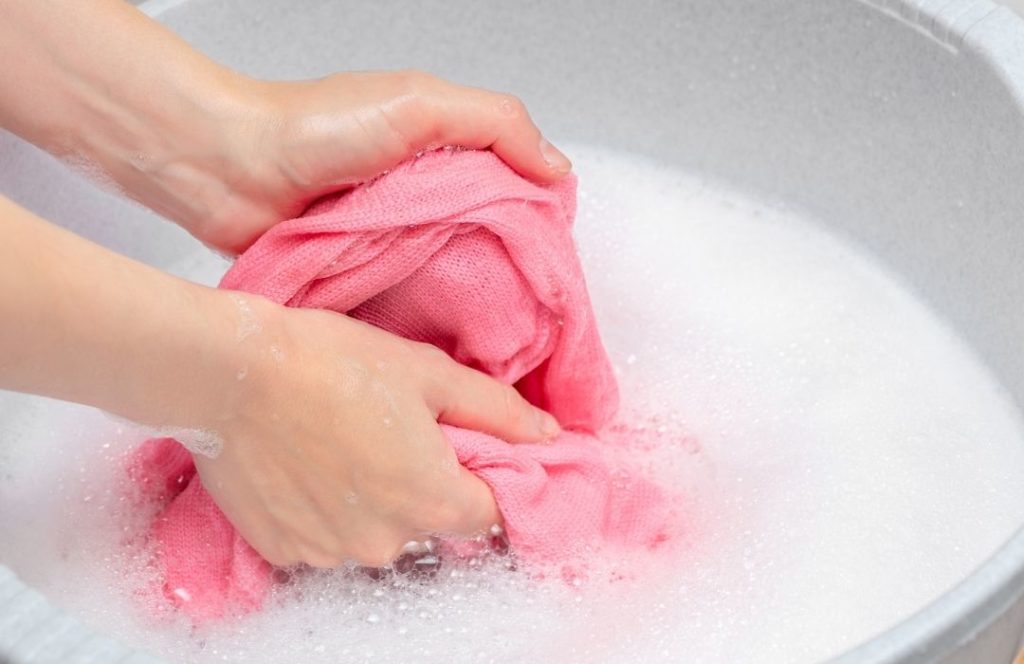
Pashmina, known for its unparalleled softness and luxurious feel, deserves tender care to maintain its timeless elegance. Proper care and maintenance not only ensure the longevity of these exquisite pieces but also contribute to the preservation of their natural qualities. Here's a comprehensive guide on how to care for your cherished products:
Gentle Cleaning
Handle your Pashmina items with care, especially when it comes to cleaning. Due to the delicate nature of Cashmere wool, it is recommended to hand wash rather than machine wash. Use lukewarm water and a mild detergent or baby shampoo. Gently submerge the Pashmina, avoiding any vigorous rubbing or wringing. Rinse thoroughly, ensuring all soap is washed away.
Drying with Caution
After washing, avoid hanging your Pashmina items as it can lead to stretching. Instead, lay them flat on a clean, dry towel. Roll the towel and gently press to remove excess water. Reshape the product to its original size and lay it flat on another dry towel to air dry. Keep it away from direct sunlight to prevent colour fading.
Storage Wisdom
Proper storage is crucial to protect your Pashmina items from dust and potential damage. Store them in breathable fabric bags or pillowcases to allow air circulation. Avoid using plastic bags, as they can trap moisture and lead to mould growth. Additionally, ensure that your Pashmina is clean before storing to prevent any stains from setting.
Say No to Moths
Pashmina, being a natural fiber, is susceptible to moth damage. To safeguard your cherished pieces, consider placing natural moth repellents like cedar sachets or lavender sachets in your storage space. Regularly inspect your stored products for any signs of moth activity.
Handle with Clean Hands
When wearing Pashmina items, ensure your hands are clean and free from any oils or lotions. Oils and lotions can transfer to the fabric, leading to stains that can be challenging to remove.
Odor-Free Zone
Pashmina is known for its subtle and natural fragrance. However, it can absorb odours from its surroundings. Avoid exposing your products to strong odours like perfume, smoke, or kitchen smells. If your Pashmina does pick up an unwanted scent, air it out in a well-ventilated area.
Professional Care
For stubborn stains or extensive cleaning needs, it's advisable to seek professional dry cleaning services. Ensure that the dry cleaner has experience with delicate fabrics like Pashmina.
By following these simple yet effective care tips, you can ensure that your shawl or scarf remains as enchanting as the day you acquired it. With a little attention and devotion to proper care, your Pashmina will continue to be a symbol of elegance and sophistication for years to come.
Does Pashmina smell?
Despite its reputation for luxurious softness and unparalleled quality, some individuals may express concerns about Pashmina having a discernible odour. People often ask "Does Pashmina smell"? So, it's essential to debunk any misconceptions surrounding this issue and provide clarity on why genuine Pashmina should not have an inherent smell.
Why does Pashmina smell in transit
One potential reason for an odour emanating from newly purchased Pashmina products could be the storage conditions during transit. Pashmina shawls or scarves are often packaged and shipped over long distances, sometimes in sealed plastic bags or containers. In such cases, the lack of airflow can lead to a slight musty smell due to the enclosed environment. However, this odour is typically transient and dissipates once the Pashmina is removed from its packaging and allowed to air out.
Does Pashmina smell when exposed to External Scents
Another factor that may contribute to perceived odours is exposure to external scents. Pashmina, being a natural fiber, can absorb odours from its surroundings, especially if stored alongside items with strong fragrances or in environments with cooking or smoking odours. While Pashmina itself does not emit any distinct smell, it can take on the scents present in its vicinity. However, this is reversible and can be remedied by airing out the Pashmina in a well-ventilated area.
Quality Assurance
It's crucial to emphasize that authentic, high-quality Pashmina sourced from reputable producers should not have a persistent odour. Pure Pashmina, derived from the fine undercoat of Himalayan goats, possesses inherent properties that make it resistant to odours. Moreover, meticulous cleaning and processing techniques employed by skilled artisans ensure that the final product is free from any undesirable smells. Therefore, if a Pashmina product exhibits a strong or persistent odour, it may be indicative of subpar quality or improper handling during production or storage.
Educating Consumers
In addressing concerns about Pashmina smelling, it's essential to educate consumers about the characteristics of genuine Pashmina and provide guidance on proper care and maintenance. By debunking myths and clarifying misconceptions, we can instil confidence in the exceptional quality and integrity of authentic products, reassuring customers that any perceived odour is likely temporary and easily remediable.
Identifying Genuine Pashmina
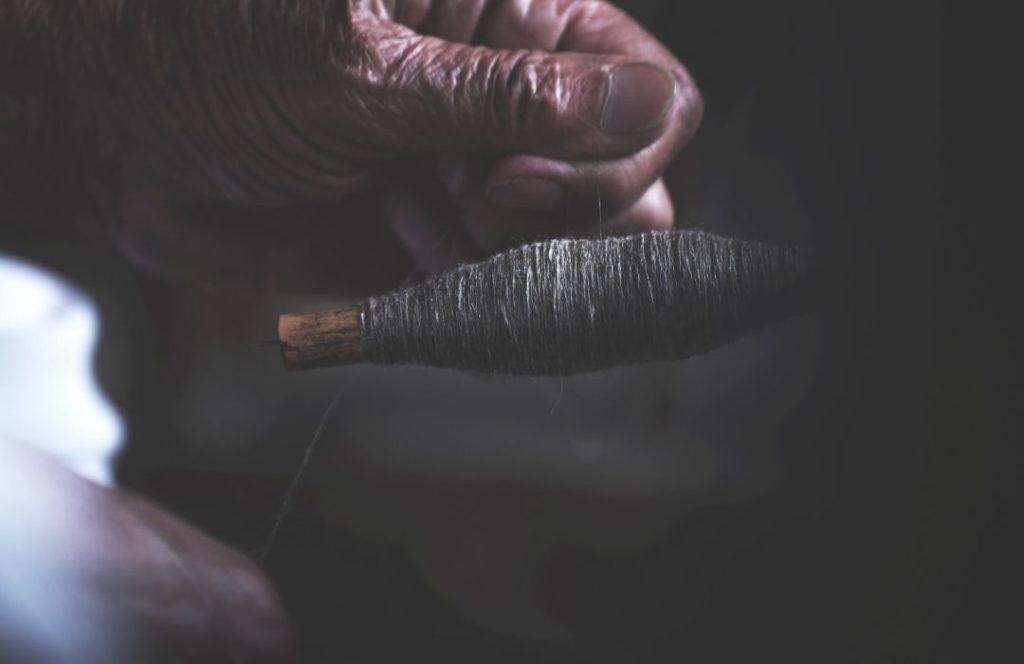
To allay concerns about the quality of Pashmina and address any potential odour-related misconceptions, it's crucial to empower consumers with the knowledge to identify genuine products. Here are key factors to consider when determining the authenticity of Pashmina products:
Fiber Fineness
Authentic Pashmina is renowned for its exceptional fineness, stemming from the soft undercoat of Himalayan goats. When examining a product, pay attention to the fineness of the fibers. Genuine Pashmina should feel incredibly soft and delicate against the skin, reflecting the fine texture characteristic of this luxurious wool.
Texture and Feel
The texture and feel of Pashmina are distinctive, setting it apart from imitations. Run your fingers across the fabric and notice the smooth, silky sensation. Authentic Pashmina has a unique tactile quality that results from the natural fibers, making it a delightful experience to touch.
Reputable Sellers
Choosing a trustworthy and reputable seller is paramount when investing in Pashmina. Established sellers who prioritize quality and authenticity are more likely to offer genuine products. Research the background of the seller, read customer reviews, and ensure they have a proven track record of delivering authentic Pashmina.
Certifications
Look for certifications that vouch for the authenticity of the Pashmina product. Certificates from recognized authorities or organizations can provide assurance regarding the quality and origin of the wool. Genuine Pashmina products often come with certifications that validate their authenticity.
Price Reflecting Quality
While price alone is not a definitive factor, it can be indicative of the quality of Pashmina. Authentic Pashmina is a luxurious and labour-intensive material, and its price should align with the craftsmanship and fine quality. Be cautious of products that seem significantly underpriced, as they may be indicative of inferior quality or imitations.
Educational Resources
Include resources for consumers to learn more about Pashmina, its unique qualities, and how to make informed purchasing decisions. By providing this knowledge, consumers can confidently choose genuine Pashmina products that meet their expectations of luxury, durability, and authenticity.
Also read: FAKE PASHMINA - WHAT ARE THE RIGHTS OF ARTISANS?
Conclusion
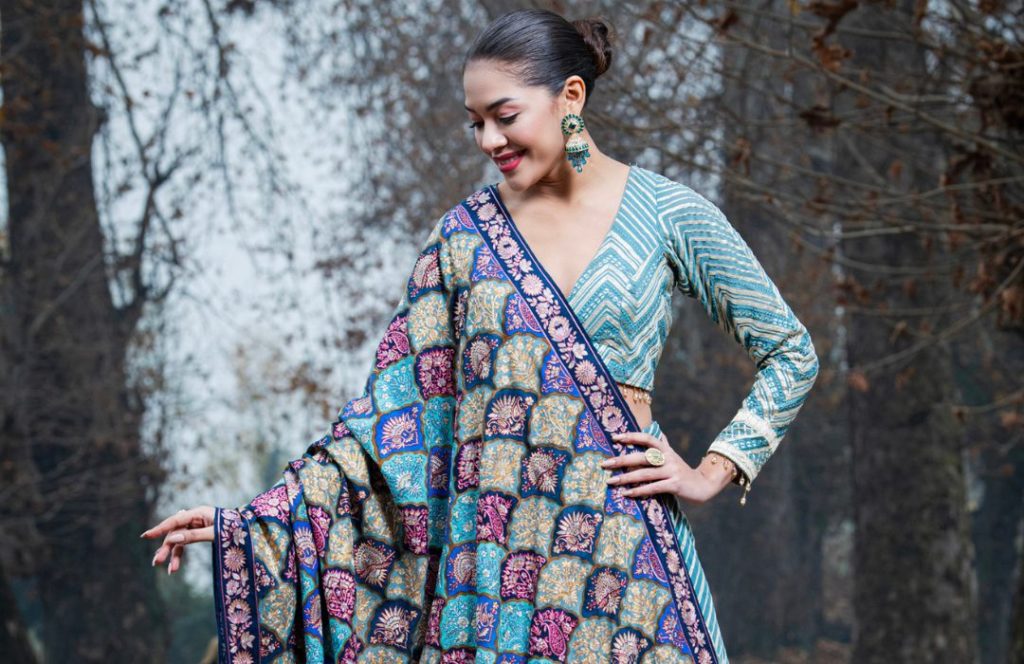
In conclusion, exploring the world of Pashmina reveals a rich tapestry of craftsmanship and quality. The origins of this luxurious wool in the Himalayan region, its meticulous production process, and the unique characteristics that define genuine Pashmina all contribute to its unparalleled reputation.
It's essential to debunk myths surrounding any potential odour associated with Pashmina. When cared for correctly, authentic Pashmina should not possess any inherent smell. The careful collection of fibers, the handcrafted weaving process, and the use of high-quality materials all contribute to a product that embodies luxury without any undesirable fragrance.
As consumers, embracing authenticity involves understanding the distinctive features of genuine Pashmina. Factors such as fiber fineness, texture, and the reputation of the seller play pivotal roles in ensuring that the purchased product lives up to the expectations of true Pashmina luxury.
Let us celebrate the timeless allure of authentic Pashmina, appreciating the artistry and dedication that goes into creating each exquisite piece. As you embark on your journey into the world of Pashmina, may the softness, finesse, and elegance of this remarkable wool envelop you in a warmth that transcends both style and seasons.